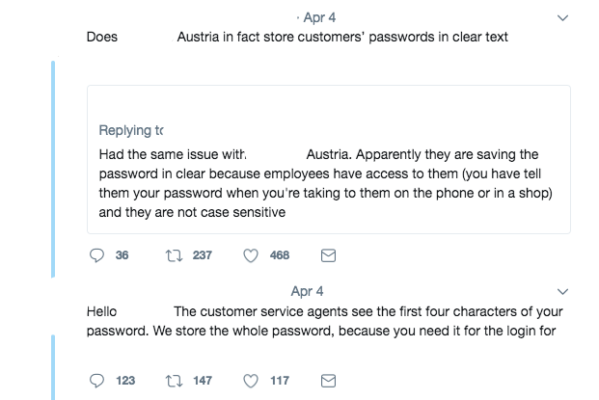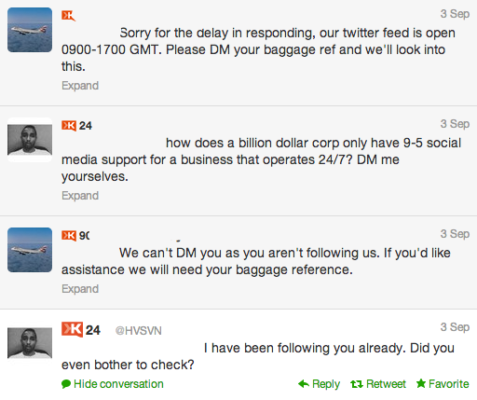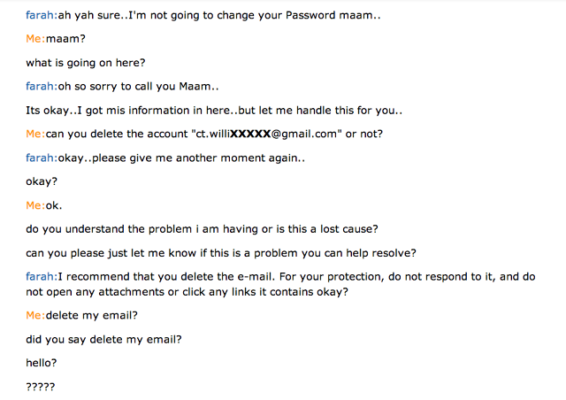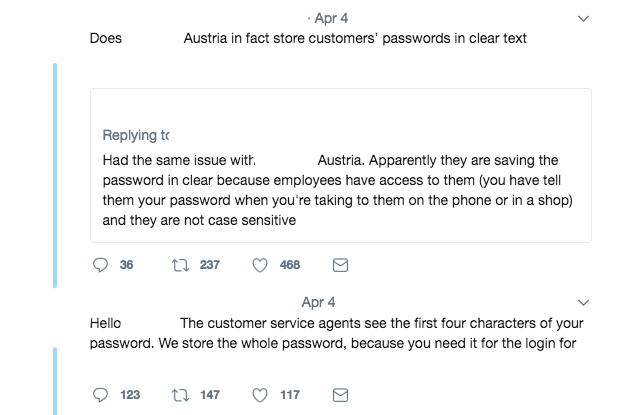Most businesses would agree that customer service plays a key role in a company’s growth and development. However, how the organization chooses to approach their customer service can significantly vary for each industry. There’s no one-size-fits-all blueprint for delivering excellent customer service and sometimes brands fall short when trying to improve their customer’s experience.
Some customer service blunders are easy to understand, others leave customers shaking their heads and wondering what the company was thinking in the first place. While these interactions are often worth a few good laughs, these extreme cases of bad customer service occur much more often than one may think. In fact, in the next section, we collected a list of some of the most common examples of bad customer service that businesses will want to be aware of.

Stories of Poor Customer Service
No company is perfect, and every business is going to make occasional mistakes when working with unhappy customers. It’s no easy task to diffuse someone who’s highly frustrated, leaving customer service reps very little room for error when dealing with an angry customer. Even the most successful brands can be susceptible to having a bad customer service moment if they aren’t focused on the customer’s success.
Companies who want to prevent these instances from affecting their business will need to know what bad customer service looks like and how they can overcome it. Take a look at some of the most common bad customer service examples as well as the recommended steps for avoiding them.

1. Prioritizing company policy above the customer needs.
As companies grow, they often need to add more internal structure that helps manage and regulate the business. This often comes in the form of corporate policies or rules that are put in place to ensure a consistent customer experience. However, sometimes the rules that are designed to benefit the business can act as roadblocks to the customer’s success.
For example, an article by Business Insider highlights a notable complaint made against a large retail brand. This customer found that a product was priced higher in the store than it was marked online. When he asked an employee to match the cheaper price, the employee denied his request due to the company’s policies.
What’s frustrating about this case is that the customer presented a clear opportunity for the business to provide above-and-beyond-customer service. Instead, this decision led to not only an unsatisfied customer but also a viral news story that influenced thousands of potential leads. Customers trust a company that’s dedicated to fulfilling their needs, and sometimes bending the rules is a great way to build customer loyalty.
2. Mismanaging social media.
Social media is still a relatively new tool for businesses, and many companies have yet to master its constantly evolving nature. Customers, on the other hand, are pioneering social media trends and are expecting brands to keep up with their fast-moving pace.
Some companies have real trouble staying up-to-date on their social media channels, especially when it comes to addressing the customer service aspect. These businesses often provide inhumane or insincere responses to customer feedback and consistently miss opportunities to address negative comments or posts.
In one case, a major phone provider was asked by one of its Twitter followers if customer service reps could see user passwords. The company replied, “Yes” and went on to explain in detail how passwords were stored in their security system. While this may have been an act of transparency on their part, this created a major security issue for the company’s users. Three days after the incident, the company took steps to change its policy to protect all of its customers’ passwords. Here’s one of the threads related to the incident:
Businesses who haven’t added customer service measures to their social media channels tend to be vulnerable to social media crises like these. Companies need to make a concerted investment into social media customer service as well as a gameplan for any potential mishaps. Customer service reps should constantly monitor social media channels and respond to customer feedback as quickly as possible. Customer service tools can help reps expand their bandwidth and better manage these channels without neglecting their phone and email queues. Having trained customer service and support employees working on this medium is a great way to avoid a major social media crisis.

Ignoring customer feedback is bad customer service?
Between the internet and social media, customers and brands are connected 24/7, opening more avenues for customers to offer their feedback. Since customers are aware that businesses are privy to their complaints, ignoring them is always worse than acknowledging them. A lack of response signals to customers that the company not only doesn’t care about their opinion but, also doesn’t value their contribution to the business.
Some airlines have a notorious reputation for mishandling customer feedback. In one case, a customer tweeted at the airline about lost luggage, and it took about eight hours for their social media team to respond. Additionally, their response was confusing and demonstrated a lack of competency for the social media site. The thread listed below was seen by over 76K users, and the story was even featured on multiple news websites.
This case is an excellent example of why response time is so important in the tech-driven age. Customers can upload messages to public forums which can instantly influence thousands of potential leads. It’s important to respond to these messages quickly because of the revenue impact it can make on a business. In fact, Twitter found that airlines that respond to tweets within 6 minutes are likely to make $20 more from the customer who wrote the tweet.
By responding to customer feedback in a timely manner, your customer service team can satisfy frustrated customers by fixing small problems before they turn into bigger ones.
Bad customer service waiting on hold for too long.
Nobody wants to be put on hold, and it can be the most frustrating roadblock for customers who have time-sensitive problems. In fact, studies show that 15% of customers hang up after being on hold for only 40 seconds. That doesn’t give the customer service rep much time at all to look into a complicated case. Customers now expect to get their answers immediately, putting increasing pressure on businesses to minimize their hold times.
One persistent customer put a company’s phone line to the test after being placed on a lengthy hold. After waiting on hold for two hours, the customer decided to wait and see how long the business would keep him on the line. 15 hours later, the call was finally pushed through and notified him that his original request (which put him on hold in the first place) had been denied due to an error. The customer was able to call back and correct his issue, but the company claims they have no documentation of this call.
Whether this was ignorance or a faulty phone system, it’s still an example of bad customer service. In this case, the customer will need to be fully reimbursed for the time he spent waiting on the phone. The company should even thank him for pointing out a flaw in their customer support system. Next, the company should consider additional ways to help customers connect with the support team. They may want to consider implementing customer service tools, like HubSpot’s Service Hub, that can help the team efficiently manage their different support queues. Whether it’s a social media channel or an email inbox, offering multiple communication channels is an important component in making businesses more accessible to customers.
1. Compromising the customer’s personal privacy.
Every customer defines privacy in their own way. Some customers are willing to share more, while others hold information closer to themselves. While it’s valuable to know more about your target audience, brands should make their customers feel protected when they share their personal information. Gaining the trust of customers is the first step to improving customer loyalty.
A common example of companies compromising their customers’ personal privacy is vocalizing a denied credit card. Cashiers and clerks will see that a credit card isn’t being approved and will blurt out “Your card is declined,” for the whole store to hear. That can be highly traumatic for a customer who may not be aware of the status of the card and is more than capable of paying for their items. Even if the customer has another card they can use, that type of outburst can dissuade people from returning to the same store.
In industries like retail and food service, this type of scenario happens every day and is always difficult to approach as a customer service rep. When it does, it’s important for reps to remain calm and make a point to not draw other customers’ attention to the interaction. Customer service reps should be mindful of their vernacular to avoid saying anything that may come off as an assumption or a judgment. Instead of saying “Your card was denied,” try something subtler like “your card doesn’t seem to be going through.” It may take a few more awkward swipes, but more often than not the customer will either pay with a different card or politely step out of the line.
2. Providing incompetent chat support.
For many customer service teams, live chat can be a tricky medium for providing customer support and service. It’s highly efficient and can reduce phone queues but contains built-in roadblocks that prevent the customer service rep from truly connecting with the customer. Sometimes it can be difficult for experienced phone reps to transition to a chat channel because of the differences in soft skills required to be successful. Chat support demands writing proficiency as well as the ability to multi-task on two or three problems at once.
One example of poor chat support is from a customer who was worried about a phishing scam sent to his personal inbox. The company’s chat rep in return sent confusing responses that seemed to indicate that the customer should delete his inbox altogether. When the customer tries to clarify the steps recommended, the rep terminates the chat before sending another response. Below is the transcript that was taken from the interaction.
The biggest problem with this chat conversation is that at no point does it feel like a fluid conversation between two people. In fact, it’s hard to even tell if the rep is a bot or a human. Since live chat can’t portray a tone of voice, it’s important that customer service reps focus on sounding like a human when working on chat. Messages in chat can easily be perceived differently by each customer, so reps need to work extra hard to provide clear and understandable answers. Reps should describe all of the steps being taken on their side, and then use tools like images and screen shares to clarify confusing issues.
To learn more about improving the customer experience, read about customer experience strategy next.
Related keywords:
-
Bad customer service
-
Bad customer service examples
-
Poor service
-
What is poor customer service?
-
Write six sentences about some bad experiences you have had with a bank
Related post:


